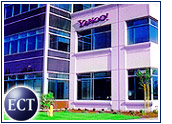According to a recent poll by the Washington, D.C.-based National Association of Business Economics (NABE), three out of five businesses are currently using e-commerce for buying or selling activities, but questions about the long-term outlook remain.
“The adoption of e-commerce for both purchasing and selling is a fairly recent phenomenon, with most firms reporting that it is still too soon to tell the impact on margins,” said Diane Swonk, chief economist at Bank One Corporation and president of NABE. “The use of the technology is becoming fairly widespread, however, and its impact reaches well beyond purchasing and selling activities.”
Companies use the Internet for selling more than buying by a slight margin, the NABE survey said, although purchasing “appears to be gaining momentum.”
Four out of five businesses surveyed said they intend to buy and sell on the Web.
Holding Onto Internal Systems
The survey found that big companies tend to conduct e-business using internally designed systems or through industry alliances rather than enlisting such online bidding and procurement intermediaries as Freemarkets or PurchasePro.com.
While smaller companies may be using the go-between sites, “if they’re trying to sell to larger firms, it’s not happening,” Swonk told the E-Commerce Times. “Large firms tend to have the economies of scale to invest in their own purchasing sites.”
Companies in several industries — ranging from retail to oil to aerospace — have announced plans to form online purchasing alliances to reduce costs and paperwork. Yet it remains to be seen how these alliances will work. B2B companies like Ariba, Inc. (Nasdaq: ARBA) and Commerce One (Nasdaq: CMRC) are helping to facilitate such exchanges, and banking on their success.
Facing Logistics, Taxing Issues
A separate survey, released Wednesday by the National Association of Manufacturers (NAM), found that while about 80 percent of manufacturers are interested in getting into e-commerce, many are unsure about the logistics. “There are more questions than answers at this stage in the game,” said Jerry Jasinowski, president of the Washington, D.C.-based trade association.
Though tax and regulatory questions remain unresolved, those issues are not stopping companies from moving forward with e-commerce, said NAM spokesman Scott Montrey. “I don’t think anybody’s just sitting and waiting, even if the future’s a little bit murky,” Montrey commented.
Thirty-six percent of those polled by NAM said they were “not sure” if Internet sales should be taxed, and 36.5 percent were against the idea of a uniform sales tax imposed by the federal government.
Force of Impact
One in four companies surveyed by NABE said the shift to e-commerce is having a “major impact” on their organizational structure. When asked whether e-commerce has made their particular industries more competitive, 31 percent replied, “Yes, a great deal.” Only seven percent said they did not expect e-commerce to affect competition.
Overall, e-commerce is having a huge impact on business and the economy, Swonk said. The effects have not shown up on companies’ margins yet because they are still investing in the technology to make the shift. “You have to pay these costs up front before you reap the benefits,” she added.
Turning the Corner
Though it is too soon to tell when the effects will show up, Swonk told the E-Commerce Times that “we’ll see within a matter of years the results of e-commerce cumulate fairly rapidly. We’re into the first five years of the process, and each year is going to be twice as fast [as the previous year].”
NABE is planning additional e-commerce surveys this year, focusing on pricing, strategy and organizational changes, said Swonk. “We’re interested in how it will ultimately impact productivity growth,” she said.












































Social Media
See all Social Media